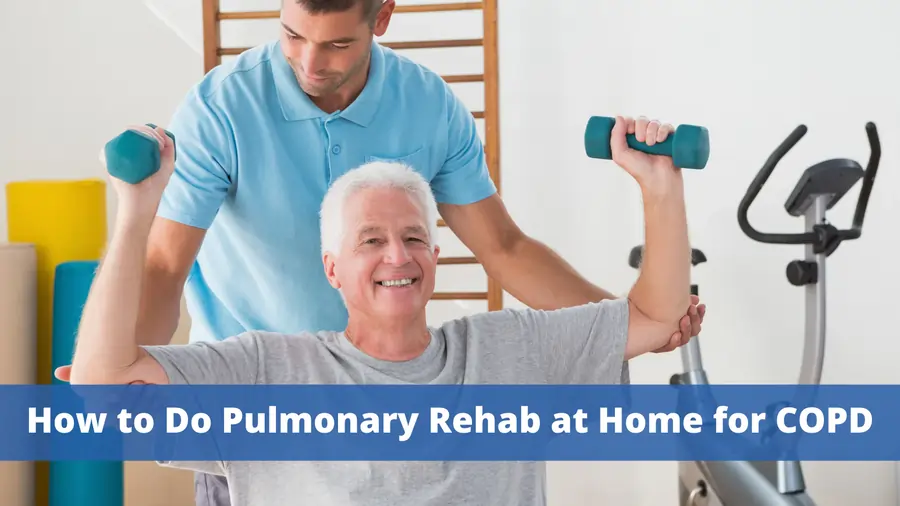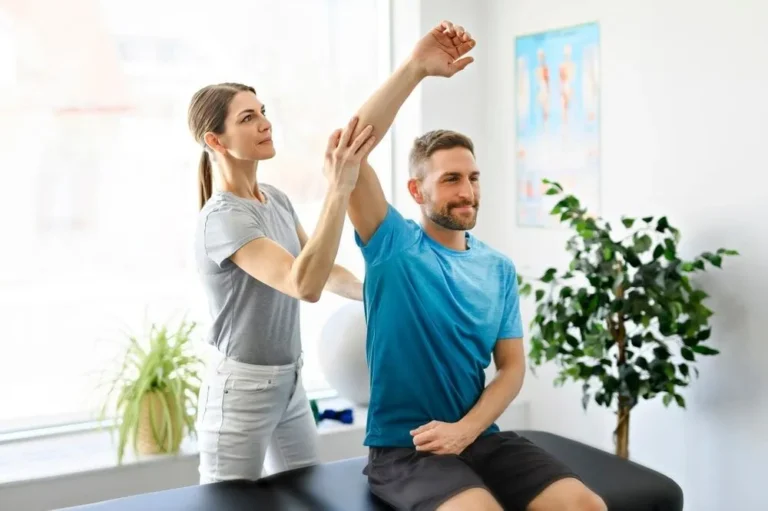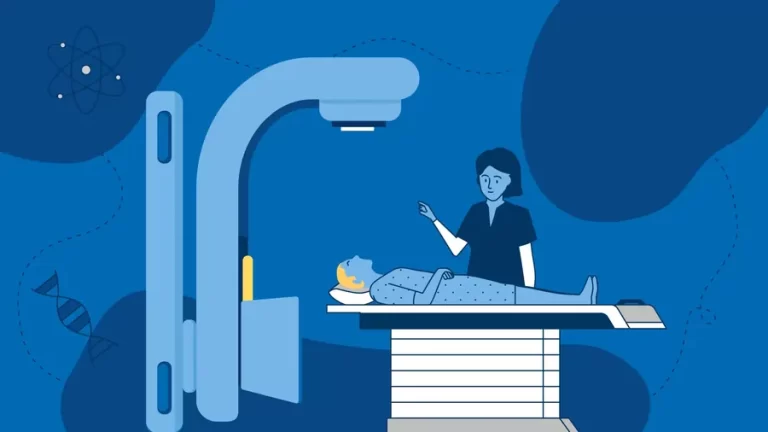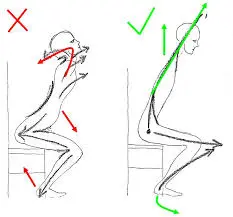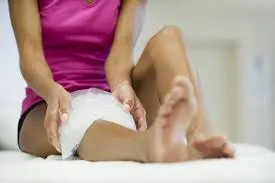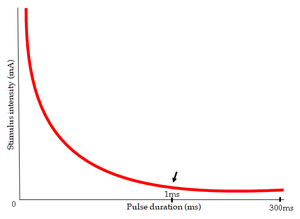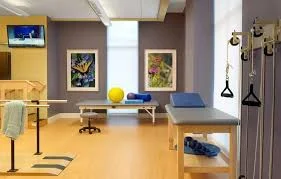Pulmonary Rehab exercises you can do at home
Introduction
A program called pulmonary rehabilitation teaches you how to cope with chronic lung disease and helps you build stronger breathing muscles. In addition to exercise and education, a team of healthcare professionals may also address breathing retraining, airway clearance, mental health support, and nutrition.
People with lung problems can breathe better and lead healthier lives with pulmonary rehabilitation, a medically supervised therapy. Pulmonary rehabilitation may be necessary if you have a lung ailment such chronic obstructive pulmonary disease (COPD). You will learn breathing methods and exercises throughout the program.
Activities for pulmonary rehabilitation that you can perform at home include flexibility activities like stretching, strengthening exercises like arm raises and lunges, and breathing techniques like deep breathing, belly breathing, and pursed lip breathing. You must speak with a medical practitioner or qualified pulmonary rehabilitation specialist to find the best workouts for your particular needs and condition.
Although there are many advantages to pulmonary rehabilitation, there are also some possible drawbacks, such as problems with program adherence, possible complications during exercise, and patient selection challenges. Adverse occurrences may result from improper patient selection, such as incorporating those with serious musculoskeletal issues or unstable heart diseases.
At-risk individuals may experience cardiovascular ischemia episodes or arrhythmias during exercise, underscoring the significance of close observation and customized treatment regimens. Long-term results may also be impacted by problems that impede program access and completion, such as financial limitations, transportation difficulties, and a lack of knowledge about the program’s advantages.
Pulmonary rehabilitation: what is it?
For long-term, chronic lung problems, pulmonary rehabilitation is a medical treatment that can help with symptoms. A group of medical professionals leads you through exercises (depending on your tolerance level), instruction, and respiratory management methods for daily tasks.
The goal of pulmonary rehabilitation is to treat people with health concerns that affect their capacity to breathe effectively and deliver oxygen to their body’s tissues by improving their cardiopulmonary health. To assist in slowing the progression of the condition and enhance the general quality of life for those affected by chronic lung disease, this rehabilitation program makes use of health education, support, and monitored exercise training.
Usually, a patient’s healthcare professional refers them to a pulmonary rehabilitation program. A supplemental treatment called pulmonary rehabilitation can assist in raising the bar for cardiopulmonary health, which can lower the risk of readmission or increase the likelihood of a successful outcome.
Your breathing muscles decrease if you have a persistent lung condition. Because of symptoms like shortness of breath, you might not be able to move as much as you would want or are used to. This vicious cycle may lead to the development of your symptoms and the weakening of your muscles. Pulmonary rehabilitation may allow you to resume your activities at your own pace. Although it won’t treat lung disease, you might experience better strength, fewer breathing issues, and an overall higher quality of life.
Which conditions are treated with pulmonary rehabilitation?
Chronic lung disorders that can benefit from pulmonary rehabilitation include:
- COPD (chronic obstructive pulmonary disease).
- Diseases of the interstitial lung, such as pulmonary fibrosis and sarcoidosis.
- Asthma.
- Cystic fibrosis.
- Bronchiectasis.
- Pulmonary hypertension.
- Lung cancer.
- Lung transplant or lung surgery recovery.
Benefits of pulmonary rehab can include:
- Symptom improvement.
- Fewer hospital visits.
- Fewer exacerbations.
- Improved quality of life.
- Enhanced capacity for regular work, exercise, and walking.
- Improved mental health.
- Less tiredness.
Risk factor
The dangers associated with pulmonary rehabilitation are minimal. To ensure that your dyspnea is controllable, your staff will keep a careful eye on you. When you initially begin the program, your muscles can feel sore, but with consistent exercise, this should go away.
The largest risk is losing the benefits of pulmonary rehabilitation once the program is over. For this reason, you must stick to the plan that your team develops for you.
What exercise to do at home
It is recommended that individuals with respiratory disorders who have started pulmonary rehabilitation follow a home exercise regimen in addition to their supervised pulmonary rehabilitation sessions.
The recommended at-home workout regimen is:
- Started one to two weeks after the supervised training program began to give time for any issues that arose during the supervised session to be discussed and fixed.
- Carried out two or three days a week (that is, on days other than the two or three days the patient is enrolled in the supervised training program). The patient should work out four or five days a week overall.
- Pursed-Lip Breathing
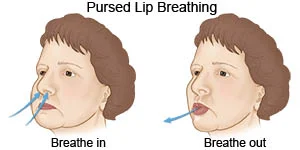
A useful method for slowing breathing and maintaining open airways for extended periods is pursed-lip breathing, which increases the amount of air that enters and exits your lungs. This practice can help you maintain your composure and is particularly helpful before engaging in physical activity or anytime you experience dyspnea. Use the muscles of your abdomen to help fill your lungs with air as you inhale through your nose for around two seconds. Then, when you release the breath through your mouth, pucker your lips and make a soft crackling sound, similar to lighting a candle. At least twice as much time should be spent exhaling as inhaling. This will help you control your breathing. Repeat a few times.
- Diaphragmatic Breathing
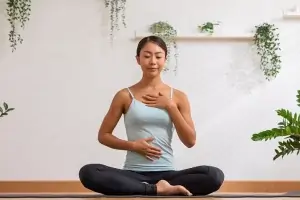
One method for strengthening the diaphragm, one of the most important breathing muscles, is diaphragmatic breathing, sometimes referred to as belly breathing. On a level surface, lie with your head supported and your legs bent to practice diaphragmatic breathing. Put one hand on your chest and the other slightly below your ribcage.
Inhale gently and deeply via your nose, allowing the oxygen to fill your stomach. Gently press in and up with the palm beneath your ribs while you exhale slowly through pursed lips. Start with 5 to 10 minutes, three to four times a day, and progressively extend the duration because this technique may be exhausting at first and may take practice.
- Relaxation Breathing & Poses
Yoga positions and relaxation breathing techniques can be effective stress-reduction techniques. The neurological system can be regulated by several breathing strategies, including pursed lip breathing, diaphragmatic breathing, and alternate nostril breathing.
By using particular muscles and enhancing posture, yoga poses like Child’s Pose, Seated Cat Cow can also help people relax. Even people with limited mobility can benefit from tai chi because it is a low-intensity, gentle exercise that is characterized by moderate motions and breathing-synchronized positions. Often described as “meditation in motion,” tai chi can be performed alone or under the supervision of a teacher, guaranteeing correct form and safety measures, particularly for those who use oxygen or inhalers.
In a similar vein, yoga promotes mental and physical fitness by fusing physical poses with attentive breathing techniques. Although yoga poses can increase energy and develop muscles, it’s crucial for anyone, particularly newcomers with lung issues, to put comfort first and steer clear of poses that could make breathing difficult.
It is important to speak with a healthcare professional before beginning any exercise program, including yoga, and taking classes taught by trained professionals who are aware of each student’s unique needs can increase the advantages of these poses and relaxation breathing techniques in pulmonary rehabilitation.
- Belly Breathing
Breathing from your abdomen, or diaphragmatic breathing, allows you to inhale more air with less effort. According to research, it also helps you overcome anxiety, which you might be feeling during the COVID-19 pandemic, by calming your stress reaction. To practice belly breathing, try doing the following two to four times a day:
- Sit upright and supported on a chair or lie comfortably on your back.
- Slowly inhale through your nose. You want your chest to remain flat while your stomach pushes out.
- Breathe in for two counts and out for four counts. You gain control over your breathing, and your nervous system slows down as a result.
- Try this breathing technique when you’re doing things like watching TV, cleaning the kitchen, or going upstairs as you become more accustomed to it. Moreover, you can use belly breathing techniques in yoga, meditation, or tai chi.
- Weightlifting
People with COPD who may suffer from muscle weakness and atrophy as a result of a reduced exercise capacity can benefit from resistance training by increasing their muscle strength and endurance.
In addition to increasing mobility and quality of life for those with COPD, strengthening skeletal muscle can also help lower the frequency of dyspnea during everyday activities. For those with COPD who may have increased dyspnea when engaging in upper-extremity exercises, strength training targeted at the upper body can be especially beneficial.
- Arm Raises
- Leg Extensions
One type of skeletal muscle exercise that can help people with respiratory conditions like COPD tolerate upper body effort is arm raises. Although upper body exertion-induced dyspnea cannot be cured by these exercises, they can help to enhance arm muscle strength and tolerability.
The body’s largest skeletal muscles are also among its most important. Your leg muscles are crucial to your everyday activities, so it’s worth the time and effort to develop and work them, especially if you have COPD or another lung condition.
Extending the legs straight out in front of the torso and then bringing them back down is known as leg extension. Although this is a strengthening workout, it can also be used as an aerobic activity to strengthen the lungs.
Simply Say No Head tilts help you focus within and become more conscious of your tense areas. Your face, neck, and shoulders will relax if you deliberately and gently nod down and then side-to-side. Here’s how:
- Put your shoulders back and sit comfortably. Take a deep, leisurely breath.
- As you exhale, lower your chin.
- As you slowly return your senses to neutral, take a deep inhalation.
- Nod your head from side to side and use your breath to make soft, natural movements.
- Go back to neutral and begin anew.
- Shoulder Roll
Try shoulder rolls once your head tilts are complete. Hold your hands at your sides and remain in a natural position. Roll your shoulders forward softly after taking a breath. Calm down. Roll your shoulders back softly and take another breath. As long as it feels wonderful, unwind and repeat.
How to Stay Motivated and Focused
Considering social remoteness, you’re most likely already behind schedule. Do not be concerned. Exercise doesn’t have a specific time. If you include exercise in your day and set minor goals, you might be more likely to acquire your daily amount.
Try these:
- Stretching and a good yawn before getting out of bed can help you start the day off well.
- Engage in your workouts with your family. Encourage all members of your family to record the number of minutes they spend exercising each day.
- Reward yourself when you accomplish your fitness objectives: Make a special treat for your family, watch a great movie together, or download a book you’ve always wanted to read.
Is At-Home Pulmonary Rehab Effective?
Key vital signs are tracked during workouts and other physical activity by means of remote monitoring technology that is supplied to the patient as part of virtual pulmonary rehabilitation programs. During the COVID-19 epidemic, this removes the need for susceptible populations to have in-person appointments and needless interactions with personnel.
People with lung disorders may find that at-home pulmonary rehabilitation is a useful tool for managing their illness and enhancing their quality of life. To assist people in their pulmonary rehabilitation journey, Health provides a customized rehab program. The program offers a variety of at-home exercises and activities, health information, and assistance from a committed exercise physiologist.
When you can just sign up and make an appointment from home and work toward bettering your health in the convenience and security of your own home, why make three weekly sessions at a physical rehab clinic?
Follow the guidelines
Watch for signs of overexertion and follow your pulmonary rehab team’s advice. Generally speaking:
- Keep yourself hydrated by drinking water all day long.
- Please take your time; don’t push yourself too hard.
- If you need to use your rescue inhaler, keep it close at hand.
When You’re Short of Breath
As long as you are still able to manage your breathing, shortness of breath is acceptable. However, if it persists, pause and rest. You should cease exercising and let your pulmonary rehab team know if any of the following happen:
- Increasing dyspnea
- Discomfort or pain in the chest
- Your chest feels heavy, tight, and burning.
- Unusual pain in your jaw, back, arms, shoulders, neck, or joints
- Exhausted.
- Nausea or vertigo
As usual, speak with your Temple Pulmonary Rehab staff before starting a new at-home workout routine. Additionally, update us on your progress.
Summary
In summary, pulmonary rehabilitation can play a significant role in the management of a lung condition and the enhancement of general and physical health. Regularly engaging in a variety of controlled pulmonary rehabilitation exercises can help people improve their strength, stamina, and overall health.
FAQs
For whom is pulmonary rehabilitation necessary?
For some lung diseases, including cystic fibrosis, pulmonary hypertension, asthma, and COPD, your doctor can suggest pulmonary rehabilitation to help you breathe more easily and enhance your quality of life.
Which breathing exercises are the most effective?
Diaphragmatic breathing, often known as belly breathing, is frequently advised for general breathing improvement. It can increase lung capacity and oxygen levels while strengthening the diaphragm, the main breathing muscle. Pursed lip breathing, which aids in respiratory control and may be helpful for ailments like COPD, is another useful exercise.
Which exercises are beneficial to the lungs?
Deep breathing techniques like pursed-lip breathing and diaphragmatic breathing are useful for enhancing breathing and strengthening the lungs. These methods aid in strengthening the respiratory muscles and increasing lung capacity. Regular cardiovascular exercises like cycling, swimming, and jogging can also enhance the effectiveness and health of the lungs.
Which exercises raise oxygen levels?
Emphasize both physical activity and breathing techniques to raise oxygen levels. Deep breathing and pursed-lip breathing are two breathing techniques that can assist in widening airways and improving oxygen absorption. Frequent aerobic activity, like swimming or brisk walking, can enhance oxygen flow to tissues and improve cardiovascular health.
How do you clear your lungs?
By keeping both feet flat on the floor and reclining in a chair with their shoulders relaxed, people can clear their lungs of extra mucus.
Over the stomach, fold the arms.
Breathing in slowly through the nose.
How may fluid be naturally removed from the lungs?
Natural techniques can help enhance lung function and possibly help clear mucus, which might feel like fluid buildup, even though they cannot directly remove fluid from the lungs. It helps to use methods like steam inhalation, deep breathing exercises, and drinking plenty of water.
What is the finest breathing exercise?
Diaphragmatic breathing, often known as belly breathing, and pursed-lip breathing are great breathing exercises for improving general breathing, especially for people with lung diseases like asthma or COPD. For a more thorough method of enhancing lung function and breathing, these exercises can be mixed with other physical activities like weight training or walking.
Reference
- Professional, C. C. M. (2025, March 19). Pulmonary rehabilitation. Cleveland Clinic. https://my.clevelandclinic.org/health/treatments/pulmonary-rehabilitation
- Hove, A. (2020, April 10). Blog – 5 pulmonary rehab tips you can do at home. Temple Health. https://www.templehealth.org/about/blog/5-pulmonary-rehab-tips-at-home
- American Lung Association. (n.d.). Breathing exercises. https://www.lung.org/lung-health-diseases/wellness/breathing-exercises
- Pulmonary Rehabilitation | NHLBI, NIH. (2022, March 24). NHLBI, NIH. https://www.nhlbi.nih.gov/health/pulmonary-rehabilitation
- Home Training | Pulmonary Rehabilitation Toolkit. (2022, August 29). Lung Foundation Australia. https://pulmonaryrehab.com.au/exercise-training/home-based-training/
- Emichels. (2024, September 24). Breathe Better with Pulmonary Rehabilitation Exercises. Webster Park Rehabilitation & Healthcare Center. https://websterparkhealthcare.com/pulmonary-rehab-exercises-breathe-better/
- Carda Health. (n.d.). 7 pulmonary rehab exercises you can do at home. Carda Health. https://www.cardahealth.com/post/pulmonary-rehab-exercises
- American College of Sports Medicine. (2021). Home-Based Exercise Recommendations. https://www.pulmonaryfibrosis.org/docs/default-source/programs/pr-toolkit/home-based-exercise-handout.pdf?Status=Master&sfvrsn=69292158_3

